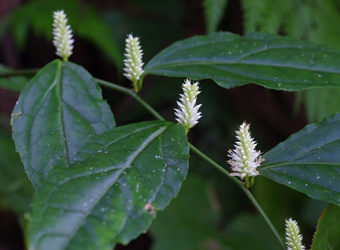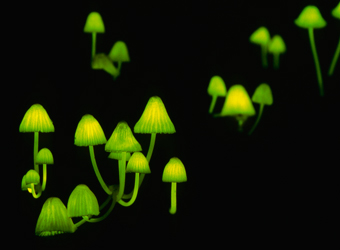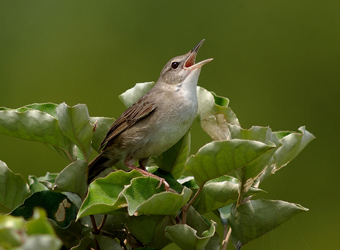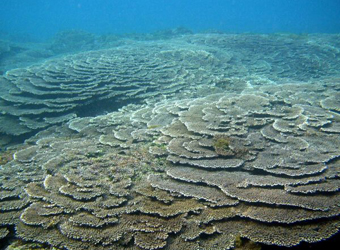You can see various creatures and plants at the Nanki Kumano area which is known as a warm and rainy region
In the coastal area where evergreen forests predominate, you can see plants such as Ubame Oaks, Castanopsis sieboldiis, Camellia japonicas, and Japanese Cheesewoods. In such forests, luminous fungus and Shiinotomoshibitakes can be observed in rare occasions, along with large pteridophytes and dragon bottle red snappers.
In the high mountain area, you can see deciduous trees such as beech trees. You can also encounter various kinds of endemic species growing in this area, such as Tricyrtis macrantopsis masams, Kinokuni-suzukakes and Oomamakonas, along with rare species of Bertholletia marmoratas and the remaining species of Pseudotsuga japonicas.

Kinokunisuzukake

Shiinotomoshibidake
Concerning to animals, rare species of Styan’s grasshopper warbles (birds), Nanki-uranami-akashijimis (insects) , Glirulus japonicas and Japanese red-backed voles (mammals) are known to live in this area. This is the one and only large breeding area of eastern bent-wing bats within the Kinki district. Nanki Kumano area is also an important area for the northern limit habitat of giant mottled eels. Among the 500 marshes chosen as valuable and important Japanese marshes, 4 places exist in the area.

Styan’s grasshopper warbler
Nanki Kumano is surrounded by the Kareki-nada and the Kumano-nada. Affected by the Kuroshio Current, marine creatures living among the Kareki-nada consist of not only Subtropical Zone creatures but also Temperate Zone ones. There you can see coral colonies which is the world northernmost colony which is registerede under the Ramsar Convention.
The Kumano-nada where the deep-sea current runs along near the coast is rich in upwelling nutritive salt and highly productive. Sperm whales and Humpback whales can be frequently seen here.

Coral Colonies

